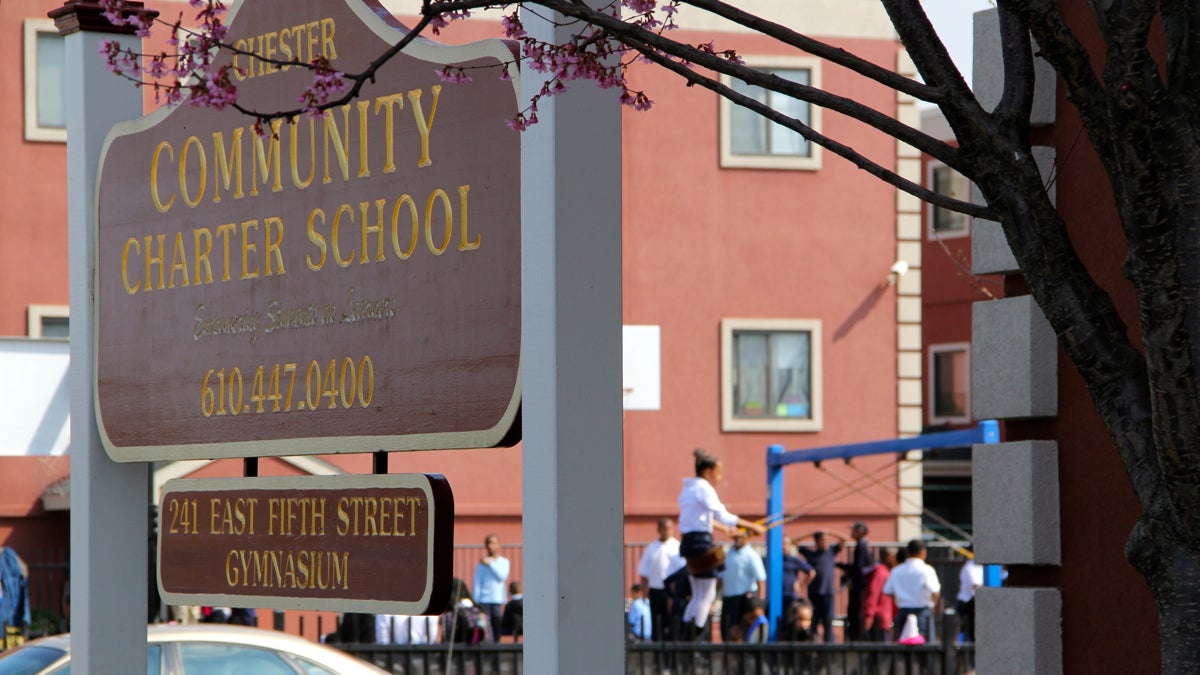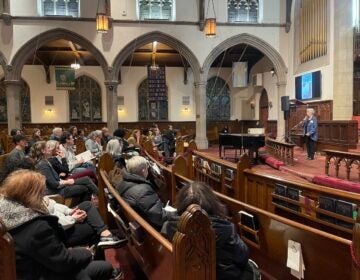Report shows more suburban Pa. students choosing charter schools
The growth hasn't been as dramatic as in major cities, but the number of suburban students in charter schools has grown for 15 consecutive years, according to the new report.

Chester Community Charter School. (Emma Lee/WHYY)
Though commonly associated with urban education, charter schools have grown steadily in the suburbs outside Philadelphia, a new report shows.
For 15 consecutive years, the number of children attending charter schools in the four counties surrounding Philadelphia has increased, according to “Uncharted Territory,” an analysis by the advocacy group Public Citizens for Children in Youth known as PCCY.
In 2016 — the last year for which enrollment data was available — 15,725 students from Bucks, Chester, Delaware, and Montgomery counties were enrolled in charter schools, and the suburban school districts made about $217 million in charter payments.
Chester-Upland is the only suburban district where a majority of public school students attend charters, but in 13 districts, the charter sector educates 5 percent or more of students. That includes Coatesville Area (22.8 percent), Bensalem Township (14.3 percent), and Avon Grove (14.2 percent).
On the whole, much of the suburban charter activity is centered in Delaware and Chester counties.
With roughly 70,000 of it 202,000 students (35 percent) in charters, Philadelphia still has by far the largest number of students in charter schools in Pennsylvania.
Still, suburban charters add about 1,000 students a year, and the growth has been consistent.
The PCCY report did not explore why more suburban families are choosing charters, but the organization’s executive director, Donna Cooper, believes the financial stress on some school districts has prompted families to seek alternatives. Some suburban districts have seen poverty increase and property values stagnate, she said, meaning they have less money to educate students with more complex needs.
“And so the amount of money available for classroom instruction has more and more demands on it,” Cooper said.
Charters have historically flourished in low-income communities with struggling public school systems and residents who have fewer educational options than their more affluent counterparts.
The William Penn School District in Delaware County is among those suburban school districts struggling financially, so much so that it’s spearheading an education-funding lawsuit against the state.
Junior Charlene Canning, who attends the district’s lone high school, said her best friend’s mom sent the family’s youngest child to a nearby charter.
“And she said it was because her mother didn’t believe the school district had the adequate resources to provide him with a quality education,” Canning explained.
State Sen. Anthony Williams, D-Philadelphia, a longtime charter backer, said parents in some inner-ring suburbs will seek alternatives as their districts struggle to meet the needs of an increasingly diverse student body.
“If it’s not charters, it’s going to be something else,” he said.
The PCCY report also explored some of the quirks of the suburban charter sector. It noted, for instance, that some suburban charters draw from as many as 18 home districts. Since the charter payment rate is set by how much the child’s home district spends on its own students, suburban charters can receive wildly different reimbursement rates from student to student.
Looking at finances, the report’s authors also found that many suburban charters also maintain far larger surpluses than traditional public school districts are allowed to maintain.
One charter, for instance, had a surplus larger than its budget.
The rest of PCCY’s report touched on issues long endemic to the charter debate, including charter performance (a mixed bag, PCCY says) and the share of disadvantaged students charters serve.
For a look at the full report, click here.
WHYY is your source for fact-based, in-depth journalism and information. As a nonprofit organization, we rely on financial support from readers like you. Please give today.





